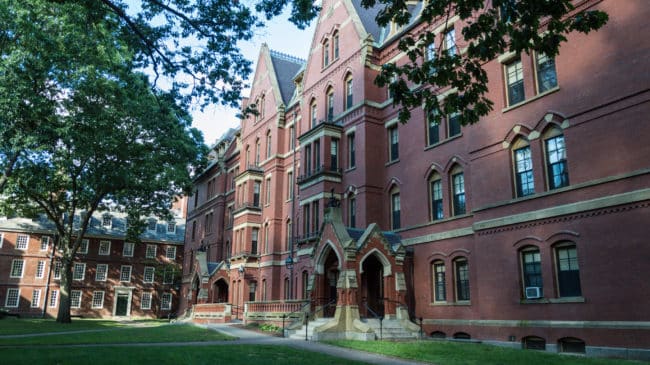United States Court of Appeals For the First Circuit
Students for Fair Admissions, Inc., Plaintiff-appellant,
v.
President and Fellows of Harvard College, Defendant–appellee, and The Honorable and Reverend the Board of Overseers, Defendant.
On Appeal From the United States District Court For the District of Massachusetts, Boston
Before the Honorable Allison D. Burroughs, District Judge
Amicus Brief of Pacific Legal Foundation, Reason Foundation, Center for Equal Opportunity, Individual Rights Foundation, and the Chinese American Citizens Alliance – Greater New York In Support of Plaintiff–appellant Students For Fair Admissions, Inc. And Reversal
The need for racial classifications is unclear, but “the costs are undeniable.” Parents Involved, 551 U.S. at 745 (plurality opinion). Race-based admissions policies do not treat people as individuals, but “as simply components of a racial . . . class.” Miller v. Johnson, 515 U.S. 900, 911 (1995) (internal quotation marks and citations omitted).
Racial classifications are inherently arbitrary. Like many universities, Harvard uses broad racial categories such as African-American, Hispanic, and Asian. ADD 103. But there is nothing intrinsic in these categories to assure commonality of experience. The term “Hispanic,” for instance, does not describe a common background, designate a common language, or even describe gross physical appearance. See Peter Wood, Diversity: The Invention of a Concept 25 (2003). The same can be said of the term “Asian,” which make up roughly 60 percent of the world’s population and encompasses people of Chinese, Indian, Filipino, and many more backgrounds. See United Nations, Population.
Harvard’s use of racial classifications perpetuates harmful stereotypes. Asian applicants were described as lacking in leadership, grit, and other factors that contribute to their low “personal ratings.” ADD 20 (“Although [Harvard’s] reading procedures have not historically provided detailed guidance on what qualities should be considered in assigning a personal rating, relevant qualities might include integrity, helpfulness, courage, kindness, fortitude, empathy, self-confidence, leadership ability, maturity, or grit.”). These stereotypes flow beyond campus boundaries. For decades, college admissions guides like the Princeton Review have taken Harvard’s race-based admissions policies into account in its guidance to aspiring high school students. One guide advises Asian students to “get involved in activities other than math club, chess club, and computer club.” Princeton Review, Cracking College Admissions, at 175 (2d ed. 2004). It implores Asian students to avoid telling schools their race, but encourages non-Asian students with “Asian- sounding surname[s]” to “report [their] race and attach a photograph.” Id. In all, Harvard’s race-based admissions policy “can only exacerbate rather than reduce racial prejudice,” and “delay the time when race will become [ ] truly irrelevant.” Adarand, 515 U.S. at 229 (quoting Fullilove v. Klutznick, 448 U.S. 448, 545 (1980) (Stevens, J., dissenting)).
Harvard’s discrimination against Asian American applicants prolongs a long history of discrimination against Asian Americans in the United States. Cases dating back to the 19th century have memorialized centuries of discrimination against Asian Americans. People v. Hall, 4 Cal. 399, 404-05 (Cal. 1854). Those cases were animated by the same kind of “unthinking stereotypes” that are prevalent today at Harvard.
Harvard has failed to meet its high burden to demonstrate a compelling interest in discriminating on the basis of race. Because Harvard expressly treats applicants differently based on their race, its admissions policy “must be analyzed by a reviewing court under strict scrutiny.” Adarand, 515 U.S. at 227. A court must apply this searching standard of review to “‘smoke out’ illegitimate uses of race by assuring that [Harvard] is pursuing a goal important enough to warrant use of a highly suspect tool.” Croson, 488 U.S. at 493. To this end, the court conducts a thorough “examination of the factual basis” for the University’s use of race, “and the nexus between its scope and that factual basis.” Id. at 494-95. Although the Supreme Court has held that some deference to a university’s “educational judgment that [ ] diversity is essential to its educational mission” is proper, Grutter, 539 U.S. at 328, it has never endorsed unqualified judicial deference to a university’s assertion of a compelling interest in diversity. Here, the record indicates that Harvard failed to give “serious consideration to all the ways an applicant might contribute to a diverse educational environment,” id. at 337, and is instead using race as a factor “for its own sake.” Bakke, 438 U.S. at 307 (Powell, J.).
